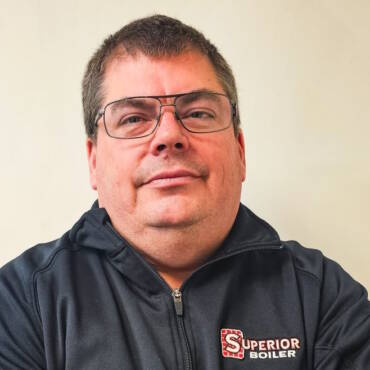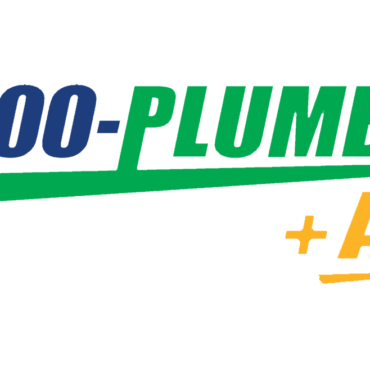Gary McCreadie is an HVAC tech, the creator of hvacknowitall.com and the HVAC Know It All Podcast
Thermal imaging in the past, has seemed unattainable for the average tech to use on the daily. Whether it be for troubleshooting, or perhaps a method to show customers how or why something is or has been happening in their home or building. That unattainability has changed in recent years as the cost continues to come down on thermal cameras. Now, the average tech can afford to purchase a half decent thermal camera and there’s many applications where they can come in handy and help identify problems or verify proper operation. Let’s talk about a few.
This video goes through some additional uses for thermal cameras in HVAC using the HIKMICRO B20
Electrical
When it comes to electrical, loose connections can raise amp draw, which creates heat. Not identifying loose connections can cause loads to run warmer and prematurely fail. Burnt wiring and connections causing emergency calls are also symptoms of loose connections. The old school way to check and find these not so tight electrical points was to manually check them one by one. Thermal cameras have changed all of that. A quick scan of a fully powered panel can reveal hot spots that need attention.
This reduces labour by forgoing the manual checks of each connection. Once the problem point has been revealed with the camera, the tech can power down the equipment and rectify the issue. I recall back in the day, we used to have an electrical contractor check breaker panels for us on an annual basis. The company only had one, very expensive camera, that they used. These days that is not the case, as I mentioned above, the price point on thermal cameras has dropped making it possible for every field tech to check their own panels if they feel it’s necessary.
Energy Management
I have recently learned more about blower door testing. Blower doors either pressurize or de-pressurize a home or building to find “leaky” spots otherwise known as infiltration. If we de-pressurize the building envelope, meaning putting it into a negative pressure, that will allow us to pull in outside air. If the delta t between indoor and outdoor air is in the 15⁰F range or higher, we’ll be able to see this infiltration with a thermal camera.
For example: If the indoor air is 70⁰f and the outdoor air is 50⁰F, that gives us a delta t of 20⁰F. With the building envelope under a negative pressure, we will pull in the 50⁰F air through leaky windows, doors, and other compromised parts of the envelope. A thermal camera will pick up the delta t and identify areas where infiltration can be reduced to conserve energy.
Air Flow Patterns
Air flow patterns can’t really be seen, we’ll they can with a thermal camera, we’ll kind of. As we discussed above, there needs to be significant delta t in order to get a snap shot of air flow. For instance, in a large commercial space, we can enable the heat from the thermostat and use a thermal camera to see what grills or diffusers are supplying warm air.
We can see the throw of the air as well, throw is the distance that the air travels as it leaves a grill or diffuser. Just keep in mind, as the air temperature begins to equalize with the space, the delta t is reduced between the flowing air and room air. But it will definitely give you a reference point to work with if checking throw of different supply runs at the same site.
Emissivity
The emissivity setting is one that confuses some and more often than not, I’ve found that due to the lack of knowledge, some techs aren’t changing the setting based on the application at hand.
What is Emissivity
As per Brent Lammert from Hikmicro “paraphrasing”
“Thermal energy can be emitted by a target, the air emits thermal energy very very well. Thermal energy can be absorbed or reflected by the target. Emissivity is the percentage of what thermal energy is reflected vs. emitted. The more reflective the surface the lower the emissivity value it will have.
Listen to Brent Lammert from Hikmicro discuss thermal imaging with me on the HVAC Know It All Podcast
How To Set It
The more reflective the material, the lower the setting. Most thermal cameras have pre programmed emissivity settings and some have custom settings as well that allow you to choose which level of emissivity you like. The pre-programmed settings are pretty straight forward but if you’re going to use a customized setting, it’s recommended you look up the emissivity of the object your looking to scan and input it into the camera before hand.
Tip
If we are comparing two objects with a thermal camera and those objects have different surface textures, it may be difficult to read a true contrast. To remedy this, we can add electrical tape to both surfaces. We would set our camera emissivity to the emissivity of electrical tape which is approximately 0.95 to 0.97. This way we are comparing the two surfaces on a level playing field and we’ll be able to pull a true comparison.
We’ve covered a few uses where a thermal camera can be useful, there are too many to list and discuss within this article. It’s important for techs to read the literature that accompanies the tool and familiarize themselves with it. Experiment with thermal images in day to day tasks and you’ll quickly find where the best uses are for service and maintenance.
Gary McCreadie
Subscribe to the HVAC Know It All app
Follow HVAC Know It All on Instagram, Facebook, YouTube and LinkedIn and LISTEN to the HVAC Know It All Podcast
Save 8% on purchases at TruTech Tools with code knowitall (excluding Fluke and Flir products)
Save 8% at eMotors Direct with code HVACKNOWITALL













Whether you require installation, repair, or maintenance, our technicians will assist you with top-quality service at any time of the day or night. Take comfort in knowing your indoor air quality is the best it can be with MOE heating & cooling services Ontario's solution for heating, air conditioning, and ventilation that’s cooler than the rest.
Contact us to schedule a visit. Our qualified team of technicians, are always ready to help you and guide you for heating and cooling issues. Weather you want to replace an old furnace or install a brand new air conditioner, we are here to help you. Our main office is at Kitchener but we can service most of Ontario's cities
Source link







Add Comment